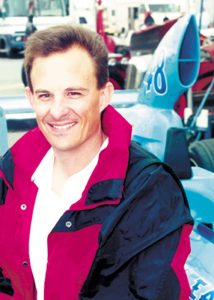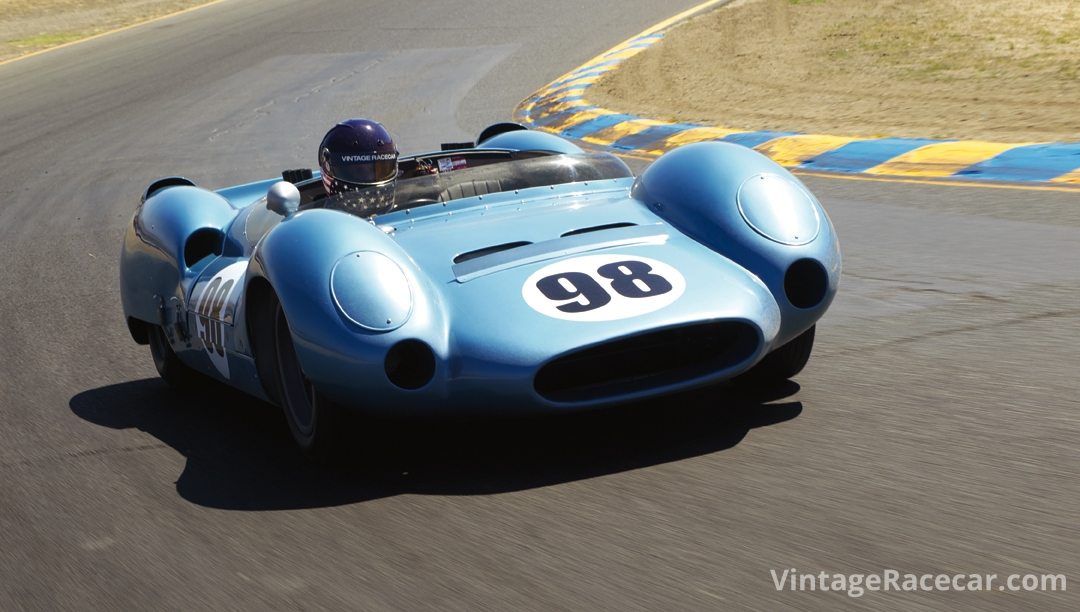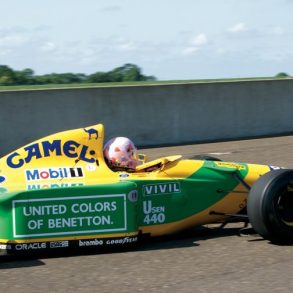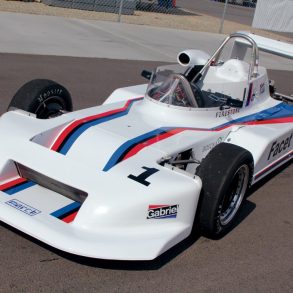In early April, I made my way to Las Vegas for the inaugural Champ car Vegas Grand Prix. This new event featured just three races through the streets of downtown Las Vegas, the main Champ car race, an Atlantic race, and a historic Formula One race sanctioned by Historic Grand Prix. For some inexplicable reason, the organizers must not have been able to find a suitable talking head for the historic Formula One cars, as they asked me to come out and announce the race. Well, every event makes mistakes the first year!
While I’ve actually announced at several events for HGP in the past, one of the things that made this particular race special was the fact that the organizers had arranged for several “star drivers” to compete in the HGP race. Among these star drivers were Indy champions Bobby Rahal and Arie Luyendyk.
Rahal was in Vegas to drive Phil Reilly’s immaculate 1974 Brabham BT-44. Though most fans know him for his 1986 Indianapolis 500 win, as well as victories in the 1981 24 Hours of Daytona and the 1987 12 Hours of Sebring, few realize that Rahal did run two Formula One races for Wolf in 1978 (Canada and Watkins Glen). When I asked him about those drives, he smiled and said that the Wolf WR-6 was a “pig to drive” and that sadly it really wasn’t the right opportunity, nor the right time for him.

Editor
Now, at the risk of sounding like a stalker or a starry-eyed schoolgirl, I have to say that spending time with Rahal is always a treat. He is, without doubt, one of the most likeable and approachable drivers. But I think even more importantly than that, he is the consummate car enthusiast. Bobby loves cars. He likes driving them, he likes owning them and he likes talking about them—road cars and racecars alike. And while we oftentimes take it for granted that professional drivers are enthusiasts, many see cars as merely tools of the trade, while a very select few, like Rahal, are truly passionate about the cars and the history that they embody.
Another former champion, who was in Vegas solely to drive a historic Formula One car that weekend, was Arie Luyendyk. Like Rahal, Luyendyk has won the 24 Hours of Daytona and the 12 Hours of Sebring and has two Indy 500 winner’s rings sitting somewhere in his collection. Also, like Rahal, Luyendyk is immensely approachable and a very affable character. I caught up with him in the HGP paddock on Friday and after introducing myself, joked with him that we had actually met before, way back in 1984 when he first came to this country to race Super Vees. “Yeah, it was at Long Beach. You were running your first Super Vee race with Wilbur Bunce and I was the team gopher!” I said. Luyendyk lit up and immediately started recalling tales of racing Super Vees with “good ol’ boy” Bunce. Luyendyk went on to win the Super Vee championship that year, no doubt due, in no small part, to the superior level of polish I put on his wheels.
Ironically, Luyendyk was in Vegas to drive Doug Mockett’s Wolf WR-6, the same model that Rahal had such a frustrating experience with, back in ’78. However, Luyendyk, by contrast, loved driving the car. “The car is really good,” Luyendyk told me. “I can carry speed in places where the other drivers don’t, so I think I’ve got a good chance this weekend.” He went on to tell me that despite having raced since the early ’70s, this was really his first experience driving a Formula One car. “I did a few laps in a car, in the late ’70s,” he recalled, “but really, it wasn’t until this week that I’ve ever really driven one.”
In the early practice sessions, Luyendyk was indeed among the fastest cars on the new temporary street circuit. However, come race day, it was Rahal who found himself ultimately sitting in 2nd place, behind the Williams FW08C of former Trans-Am racer Dino Crescentini, in the closing stages of the race. With just a few laps left to go, a yellow flag brought out the pace car forcing everyone to bunch back up. With the problem cleared up, the race was restarted with just two laps left to go. Rahal—in a non-ground-effects car 10 years the junior of Crescentini’s Williams—played out the restart perfectly, sling-shooting by Cresecentini at the end of the front straight and out into the lead. In another lap, Rahal took the checkered flag, and with it his first victory in a Formula One car—albeit 20 years later than he had planned.
As part of my duties as track announcer, when the cars were on their cool-down lap, I raced from the broadcast booth to victory circle, to perform the podium presentations and driver interviews. As Rahal walked out onto the podium—beaming from ear to ear, crowds shouting and photo flashes popping every which way—I welcomed Bobby to victory circle and joked, “Congratulations, Bobby, I never thought I’d see the day that I’d get to welcome you to victory circle for a Formula One race.” As they hoisted a gigantic floral wreath over his head, Bobby replied, “Yeah, me either! This is great!”
The man’s won the Indy 500, Sebring, Daytona and countless other events, yet you’d never know it from the genuine enthusiasm he showed winning this historic support race. Like I said—he is the consummate enthusiast.










